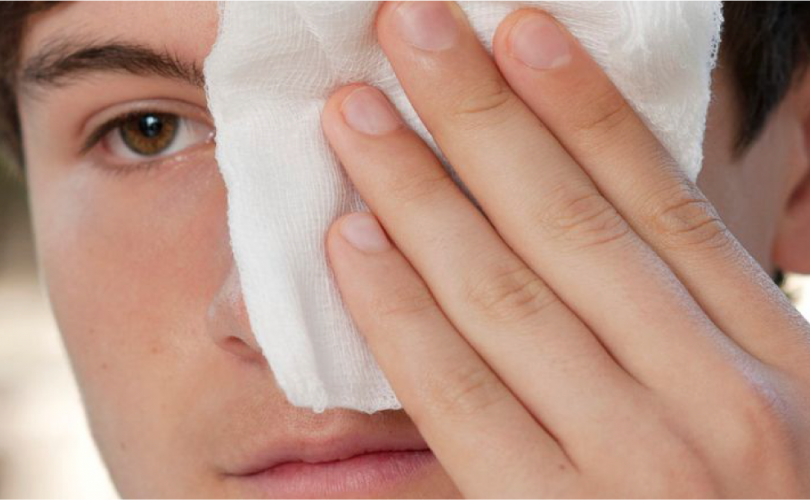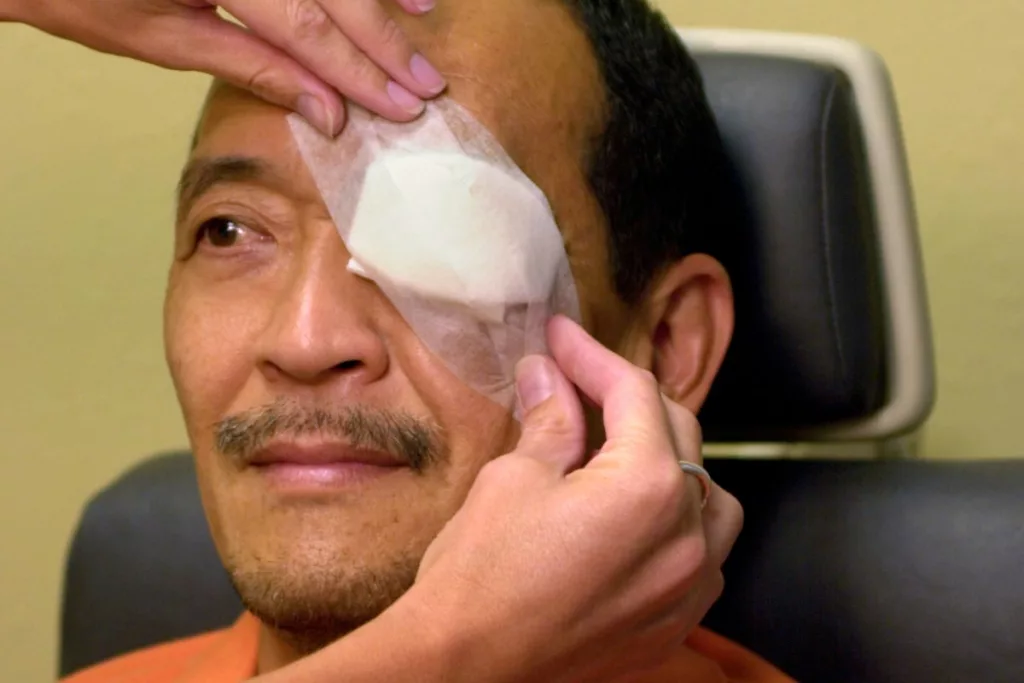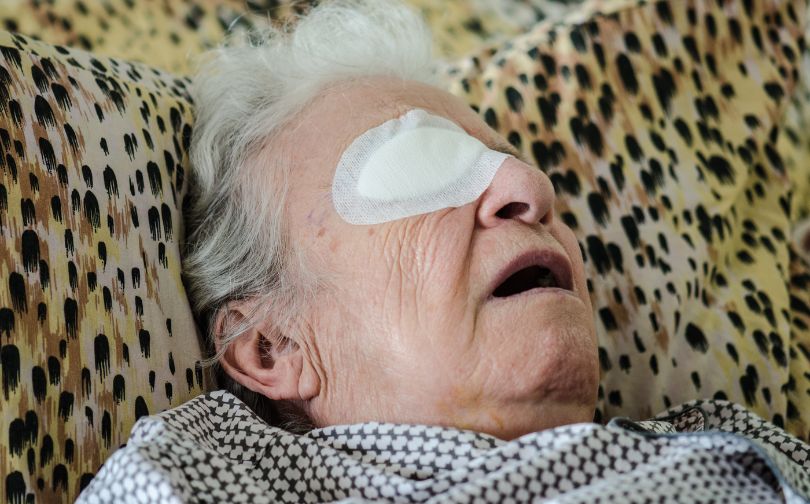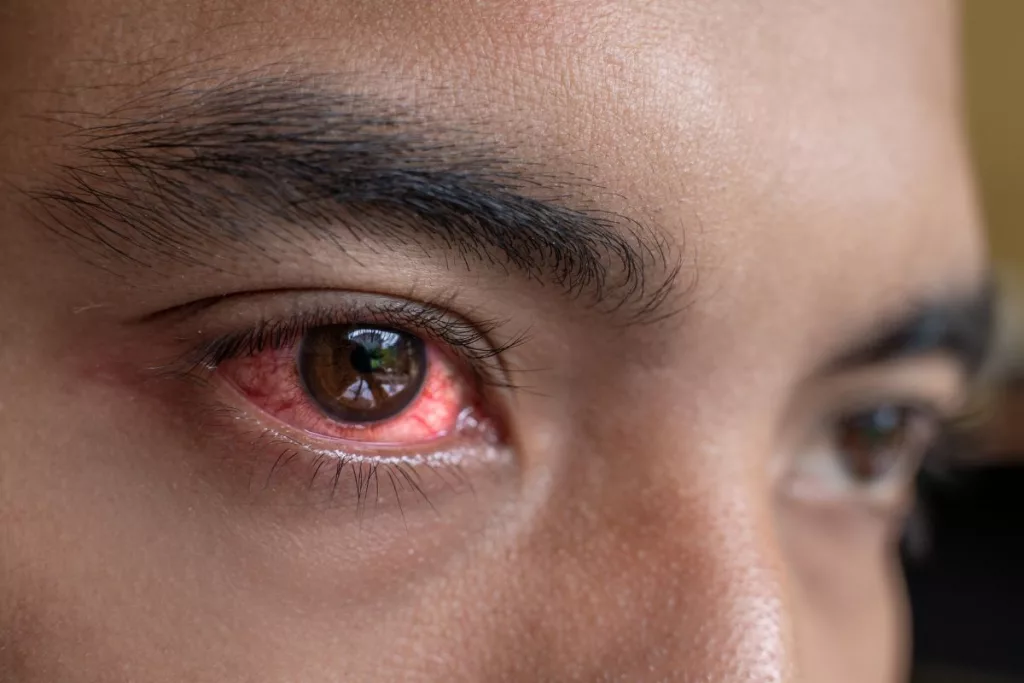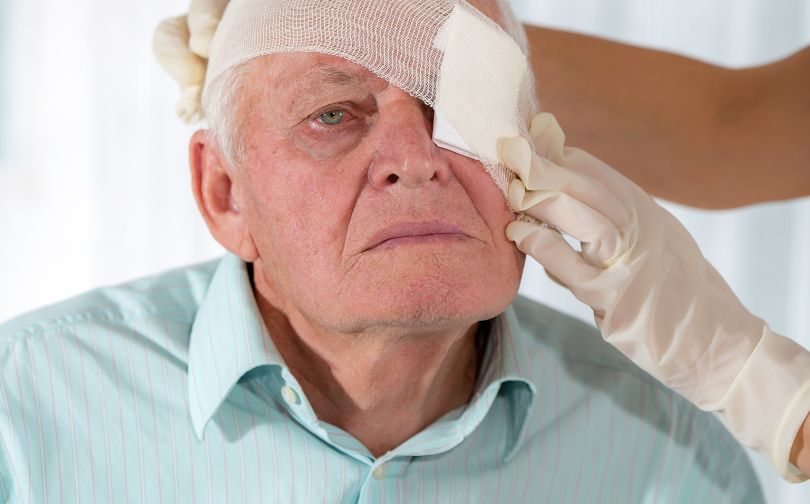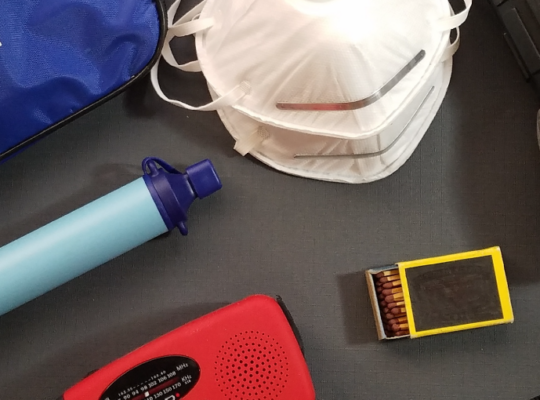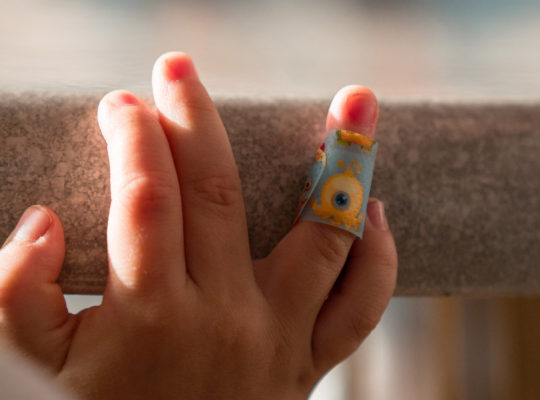Eye injuries can be frightening, especially when you’re unsure how to handle them. Whether it’s a cut, foreign object, or exposure to chemicals, knowing the right way to protect the eye is critical. One common pain point is deciding when to use a sterile eye dressing, as many people are uncertain about the appropriate circumstances.
A sterile eye dressing can provide protection from further irritation or infection, but using it incorrectly might lead to more harm than good. According to health experts, applying a sterile eye dressing without proper knowledge may result in unnecessary complications, such as trapping debris in the eye.
In this guide, you’ll learn exactly when it’s necessary to use a sterile eye dressing and how to ensure it benefits the healing process. By the end, you’ll feel confident handling these situations with care and precision.
What Are Sterile Eye Dressings?
Sterile eye dressings are specialized medical supplies used for the protection and treatment of eye injuries. These dressings include a soft, absorbent pad that cushions the affected area while helping to reduce the risk of infection.
The pad is secured by a stretchable bandage, ensuring it stays in place without causing discomfort or pressure on the injured eye. Sterility is maintained to prevent the introduction of bacteria to the wound, which is critical in reducing complications.
These dressings are typically applied as a temporary solution, offering protection, comfort, and some relief until proper medical attention can be provided.
Benefits Of Sterile Eye Dressings
Sterile eye dressings offer several key benefits in the management of eye injuries and infections, and understanding these benefits highlights the importance of utilizing sterile dressings in appropriate situations.
The following are the primary advantages of using sterile eye dressings:
- Protection from contamination: Sterile eye dressings provide a protective barrier that shields the injured or infected eye from external contaminants such as dirt, dust, and bacteria. This barrier helps prevent further damage or infection, allowing the eye to heal properly.
- Promotion of healing: By creating a clean and controlled environment around the eye, sterile dressings promote the healing process. They help maintain an optimal moisture level, prevent drying of the eye surface, and support the regrowth of healthy tissue.
- Reduction of pain and discomfort: Sterile dressings can alleviate pain and discomfort associated with eye injuries or infections. They act as a cushion, reducing friction and irritation, and providing relief to the affected area.
- Prevention of infections: Sterile eye dressings play a crucial role in preventing infections, especially in open wounds or vulnerable areas of the eye. They act as a barrier against bacteria, viruses, and other pathogens, minimizing the risk of secondary infections.
- Facilitation of medication administration: In cases where eye drops or ointments are prescribed, sterile dressings assist in the proper application and absorption of medication. They ensure that the medication stays in contact with the affected area, improving its effectiveness.
- Psychological comfort: The presence of a sterile eye dressing can provide psychological comfort to individuals with eye injuries or infections. It serves as a visible reminder that the affected area is being protected and cared for, promoting a sense of security during the healing process.
Eye Injuries Requiring Sterile Eye Dressings
By recognizing these specific eye injuries that necessitate the use of sterile eye dressings, healthcare professionals and individuals can ensure appropriate care and management:
Corneal Abrasions
A corneal abrasion refers to a scratch or injury on the cornea, the transparent outer layer of the eye. In such cases, the application of sterile eye dressings is essential.
These dressings serve multiple purposes, including protection against further damage, pain reduction, and facilitation of the healing process.
Chemical Burns
When the eye is exposed to harmful chemicals, the consequences can be severe.
Sterile eye dressings play a crucial role in shielding the eye from contaminants, diluting the harmful substances, and minimizing additional harm.
They are an important part of the initial management of chemical burns to prevent further damage and promote healing.
Postoperative Care
Following eye surgeries like cataract removal or corneal transplantation, proper postoperative care is vital.
Sterile eye dressings are commonly utilized during this phase to prevent infections, reduce inflammation, and create an optimal environment for healing.
These dressings help protect the eye and ensure a successful recovery after surgical procedures.
Eye Ulcers
Eye ulcers, characterized by open sores on the cornea, require careful attention and treatment. Sterile dressings are often applied to cover and protect the ulcers.
By doing so, these dressings promote the healing process and reduce the risk of secondary infections, helping to restore the eye’s health.
Foreign Object Removal
When foreign objects such as metal shavings or particles penetrate the eye, immediate medical attention is crucial.
Sterile dressings are used in these cases to secure and immobilize the eye, preventing further damage until professional assistance can be obtained.
They provide temporary protection and minimize the risk of additional injury before proper evaluation and treatment.
Sterile Eye Dressings In Eye Infections
In addition to their role in treating eye injuries, sterile eye dressings also play a significant role in managing various eye infections, such as the following:
Conjunctivitis
Conjunctivitis, commonly known as pink eye, is an inflammation of the conjunctiva, the thin membrane covering the front surface of the eye.
In certain cases of conjunctivitis, sterile eye dressings are employed to alleviate discomfort, reduce discharge, and prevent the spread of infection.
By providing a barrier against external irritants and facilitating a clean environment, these dressings promote healing and minimize the risk of further contamination.
Endophthalmitis
Endophthalmitis is a severe infection that affects the tissues inside the eye, usually resulting from bacteria or fungi entering the eye through trauma or surgery.
In cases of endophthalmitis, sterile eye dressings are utilized to protect the eye from external sources of contamination, reduce microbial growth, and aid in the administration of appropriate medications.
These dressings serve as a crucial component of the treatment regimen to improve outcomes and prevent complications associated with this serious eye infection.
Keratitis
Keratitis refers to the inflammation of the cornea, often caused by infections, foreign objects, or certain medical conditions. When managing keratitis, the use of sterile eye dressings is common practice.
These dressings create a barrier against pathogens, help maintain a clean environment, and facilitate the administration of prescribed eye drops or ointments.
By optimizing the conditions for treatment, sterile dressings contribute to the healing process and aid in the resolution of this inflammatory eye condition.
Considerations And Precautions
While sterile eye dressings are valuable tools in managing eye injuries and infections, certain considerations and precautions should be taken into account to ensure their safe and effective usage.
By addressing these factors, healthcare professionals and individuals can optimize the outcomes and minimize potential risks associated with the application of sterile eye dressings.
The following are important considerations and precautions to keep in mind:
Healthcare Professional Expertise
The application of sterile eye dressings should be performed by qualified healthcare professionals with expertise in eye care.
Proper technique, accurate assessment of the condition, and timely monitoring are essential for optimal outcomes.
Healthcare professionals possess the knowledge and skills necessary to ensure the correct application and monitoring of sterile eye dressings, enhancing patient safety and promoting the best possible outcomes.
Individual Sensitivities
It is important to recognize that some individuals may have allergies or sensitivities to certain dressings or adhesive materials.
Before applying a sterile eye dressing, healthcare professionals should assess for any known allergies or sensitivities and select an appropriate dressing material.
By considering individual sensitivities, adverse reactions or complications can be minimized, ensuring patient comfort and safety.
Dressing Change Frequency
The frequency of dressing changes for sterile eye dressings should be determined based on the specific condition, medical advice, and individual circumstances.
Regular dressing changes are necessary to maintain cleanliness, prevent contamination, and promote healing.
Healthcare professionals provide guidance on the appropriate interval for dressing changes, taking into account factors such as the nature of the injury or infection, the patient’s overall health, and the dressing’s ability to maintain sterility.
Follow-Up Care
Proper follow-up care is crucial when utilizing sterile eye dressings.
Regular follow-up appointments allow healthcare professionals to evaluate the progress of the condition, ensure the dressing remains intact and properly positioned, and address any concerns or complications that may arise.
This ongoing monitoring and assessment are essential to ensure that the dressing is providing the intended benefits and that the healing process is progressing as expected.
By considering these key factors, healthcare professionals can ensure the safe and effective usage of sterile eye dressings.
Through proper training and adherence to best practices, they can mitigate potential risks and maximize the benefits of using sterile eye dressings in the management of eye injuries and infections.
The Bottom Line
Sterile eye dressings play a vital role in the effective management of eye injuries and infections.
By providing protection, promoting healing, preventing infections, and facilitating medication administration, these dressings offer a range of benefits.
Their proper use, guided by healthcare professionals, ensures optimal care and improved outcomes for individuals seeking treatment for their eye conditions.
FAQs
Can Sterile Eye Dressings Expire?
Yes, sterile eye dressings can expire. Always check the expiration date on the packaging before use. Expired dressings may lose sterility, increasing the risk of infection and compromising their effectiveness in protecting an eye injury.
Why Are Sterile Eye Dressings Important in First Aid Kits?
Sterile eye dressings are important for providing immediate care in the event of an eye injury. They help prevent infection, reduce further trauma, and offer comfort while protecting the eye until professional medical attention is available.
What Materials Are Sterile Eye Dressings Made From?
Sterile eye dressings are typically made from soft, absorbent wound pads with non-adherent layers. These materials prevent the dressing from sticking to the injured area, reducing pain and further injury during removal.
Can You Use Any Dressing for an Eye Injury?
No, only sterile dressings specifically designed for eye injuries should be used. Using improper or non-sterile dressings can increase the risk of infection and hinder the healing process, leading to complications.

